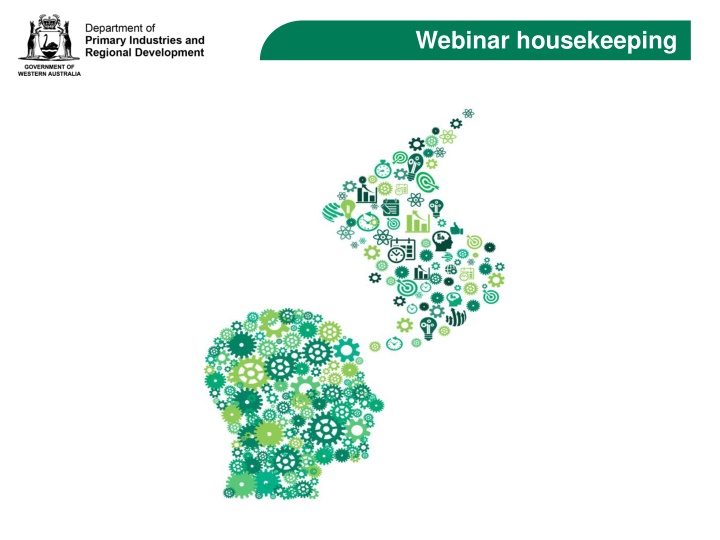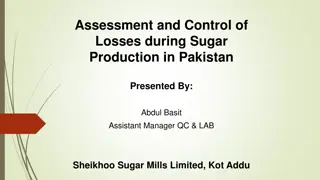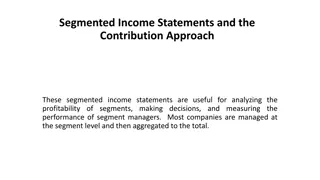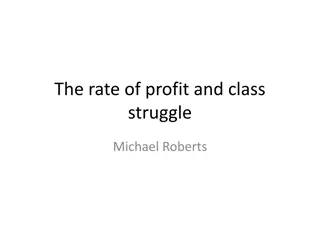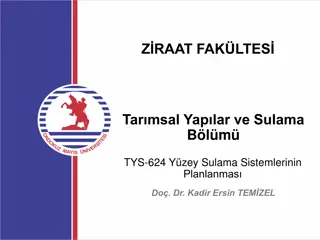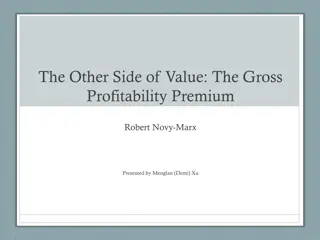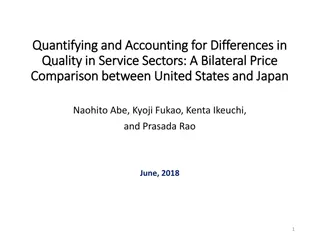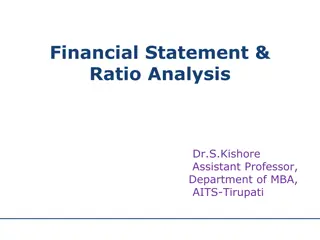Optimizing Financial Decisions for Productivity and Profitability
Enhance your financial intelligence with a webinar series focusing on managing financial risks, making short, medium, and long-term decisions, and mastering financial basics. Explore how variable costs and margins impact your farm's profitability, and learn decision-making strategies based on gross margins. Discover ways to increase productivity, reduce waste, and optimize resources to maximize profitability and cash flow.
Download Presentation

Please find below an Image/Link to download the presentation.
The content on the website is provided AS IS for your information and personal use only. It may not be sold, licensed, or shared on other websites without obtaining consent from the author.If you encounter any issues during the download, it is possible that the publisher has removed the file from their server.
You are allowed to download the files provided on this website for personal or commercial use, subject to the condition that they are used lawfully. All files are the property of their respective owners.
The content on the website is provided AS IS for your information and personal use only. It may not be sold, licensed, or shared on other websites without obtaining consent from the author.
E N D
Presentation Transcript
Program overview Financial Intelligence webinar series 5. Managing financial risks 2. Longer term financial decisions 3. Medium term financial decisions 4. Short term financial decisions 1. Financial basics
Learning outcomes Variable costs and margins can be impacted by short term decisions around productivity Increased productivity is about improving the ratio of inputs to outputs Gross farm income is vanity, profit is sanity, cash is reality
2016 average variable costs (Source: Planfarm BankWest Benchmarks)
Decisions using gross margins Subject to: environmental, market, agronomic issues Enterprise mix If canola sells at $500/t, you expect a yield of 2t/ha and variable costs are $550/ha what would be the impact of a 5% increase in price vs. a 5% increase in yield vs. a 5% reduction in variable costs? Original estimate ($500 x 2) - $550 = $450 Price + 5%... ($525 x 2) - $550 = $500 Yield + 5%... ($500 x 2.1) - $550 = $500 VC 5%... ($500 x 2) - $522.50 = $477.50 What if analysis, for example If the variable costs for wheat are $350/ha compared to $450/t for canola, growing an extra 500ha of canola rather than wheat will mean $50k in working capital is required ($100/ha x 500) Estimating working capital requirements
How do variable costs behave? Some are independent Sowing Harvesting Contractors Shearing Some can affect yield by promoting positives Fertiliser Seeding rate Some are yield dependent Freight Marketing Some affect yield by avoiding negatives Herbicides Insecticides Fungicides Drenching
How to be more productive Inputs Outputs Invest Efficiency Focus Waste Combination More More Same More Less Less Same Less Less More
Reducing waste Match supply with demand Getting the timing right Avoid costly mistakes Optimise your resources Improve logistics
Revenue is vanity, profit is sanity, cash is reality! A monthly summary of all cash inflows and outflows over 12 months. It has a starting balance, movement and a closing balance. Cash flow budget Demonstrates an ability to pay your bills (including interest and loan repayments) on time. Importance To determine peak overdraft requirements To proactively monitor your finances by comparing actual to budget Uses
Format Planned monthly cash flows ( 000) Total Mar Apr May Jun Jul Aug Sep Oct Nov Dec Jan Feb Cash inflows: Grain 168.9 35.6 65.0 18.0 50.3 Livestock 158.8 52.0 50.0 36.3 10.5 5.0 5.0 Other 10.0 1.0 1.0 0.5 3.0 3.0 1.5 0.0 0.0 Total inflows Cash outflows: 337.7 1.0 35.6 - 1.0 - 0.5 55.0 50.0 39.3 77.0 23.0 55.3 Crop costs 128.0 63.0 37.0 1.0 1.0 1.0 1.0 1.0 10.0 1.0 10.0 1.0 1.0 Livestock costs 46.0 23.0 0.0 2.0 0.0 2.0 1.0 7.5 10.5 0.0 0.0 0.0 0.0 Overheads 59.5 6.0 7.0 14.0 4.0 2.0 1.5 4.5 6.5 2.0 8.0 3.0 1.0 Family drawings 60.0 5.0 5.0 5.0 5.0 5.0 5.0 5.0 5.0 5.0 5.0 5.0 5.0 Repayments 90.5 0.5 0.5 0.5 0.5 0.5 0.5 0.5 0.5 0.5 0.5 0.5 85.0 Total outflows 384.0 97.5 49.5 22.5 10.5 10.5 9.0 18.5 32.5 8.5 23.5 9.5 92.0 Movement (46.3) (96.5) (13.9) (22.5) (9.5) (10.5) (8.5) 36.5 17.5 30.8 53.5 13.5 (36.7) Opening cash 33.0 33.0 (63.5) (77.4) (99.9) (109.4) (119.9) (128.4) (91.9) (74.4) (43.6) 9.9 23.4 Closing cash (13.3) (63.5) (77.4) (99.9) (109.4) (119.9) (128.4) (91.9) (74.4) (43.6) 9.9 23.4 (13.3)
The budgeting process Set ground rules Align to plan Incremental or zero base? Timing Consult Assumptions Past results Knowns and unknowns Contingencies Constraints Build forecast Templates Levels Sensitivities Success factors Accuracy Implement Communicate Check to actuals regularly Take action to address cause
Quality of assumptions Knowns Business plan Starting points Drawings Contractual payments and receipts Unknown knowns Commodity prices Cost increases / Inflation Interest rates Seasonal conditions Yields Unknown unknowns GFC s? Health? Adjacent farms?
Monitoring cash flows Principles Corrective actions Quantity changes - more, better, less, same Quality changes - different, better, worse Maximize revenue - sales volumes, sales mix, getting the best prices Minimize waste - getting the timing right, match supply with demand, avoid costly mistakes, optimise your resources, improve logistics Improve cashflow - use credit terms, structure borrowings, review owners drawings, sell excess assets, defer asset purchases Contingency plans - diversification, hire/lease, outsourcing, new technology Don t change the budget to match the actuals Look to the totals and sub totals before the line items Identify material positive and negative variances Isolate timing variances with YTD comparisons Drill down to root causes of variances rather than symptoms (5 why s) Consider how to continue positive variances and eliminate negative variances Review regularly (monthly or quarterly with BAS), commit to actions and monitor impact of actions
What will you now start, stop, continue doing? How to improve variable costs and margins by short term decisions around productivity ? Understand that increased productivity is about improving the ratio of inputs to outputs ?
References and further reading Planfarm Bankwest benchmarks planfarm.com.au/resources/planfarm-bankwest- benchmarks.html GRDC Cash flow fact sheet grdc.com.au/__data/assets/pdf_file/0024/165921/8135-farm- financial-tool-cash-flow-budget-fs-pdf.pdf.pdf Home page for this series of webinars agric.wa.gov.au/sheep/business-information-sheep- enterprises Tools, training and information specifically aligned to sheep farming mla.com.au/extension-training-and-tools/making-more-from- sheep/ GRDC Gross margin web page grdc.com.au/resources-and-publications/all- publications/publications/2017/02/farmgrossmarginguide2017 Generating more profit for your farm business agric.wa.gov.au/generating-more-profit-your-farm-business
Webinar wrap up Summary Questions Homework
